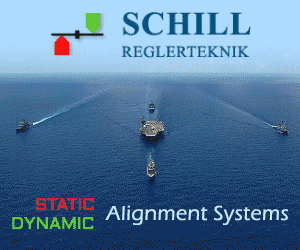Boosting Army Connectivity: Rotary Joints and Slip Rings in Action

In modern military operations, seamless communication is paramount for success. This is where rotary joints and slip rings play a crucial role. These advanced technologies facilitate uninterrupted data transmission and power supply between stationary and rotating parts of military equipment, enhancing connectivity and operational efficiency on the battlefield. In this article, we delve into the functionality, applications, benefits, and future trends of rotary joints and slip rings in military settings.
Understanding Rotary Joints and Slip Rings
Rotary joints are electromechanical devices designed to transmit signals, data, and power across rotating interfaces. They enable continuous communication and power transfer between stationary and rotating components, such as radars, antennas, cameras, and weapon systems, in military vehicles, aircraft, and naval vessels.
On the other hand, slip rings are electrical connectors mounted on rotating shafts, allowing the transmission of electrical signals, power, and data without tangling wires. They are essential in maintaining connectivity between rotating and stationary parts of equipment, ensuring reliable operation and data exchange during critical missions.
Applications in Military Equipment
1. Aircraft and UAVs: Rotary joints and slip rings are integral components in aircraft and unmanned aerial vehicles (UAVs) for transmitting radar signals, video feeds, and power between stationary platforms and rotating antennas, cameras, and sensors. This enables real-time situational awareness and surveillance capabilities.
2. Naval Systems: In naval applications, these technologies are used in radars, communication systems, and periscopes aboard ships and submarines. They enable continuous data transmission and power supply to sensors, navigation equipment, and communication devices, enhancing maritime operations.
3. Ground Vehicles: Military ground vehicles, including tanks, armored vehicles, and reconnaissance units, rely on rotary joints and slip rings for transmitting signals between stationary vehicle systems and rotating turrets, sensors, and communication antennas. This enables effective battlefield communication and target acquisition.
4. Satellite Communication: Rotary joints and slip rings play a crucial role in satellite communication systems used by the military for secure and reliable data transmission, voice communication, and command and control functions. They ensure seamless connectivity between ground stations and orbiting satellites.
Benefits and Advantages
- Uninterrupted Connectivity: By eliminating wiring constraints and enabling continuous data and power transmission, rotary joints and slip rings ensure uninterrupted connectivity in dynamic military environments.
- Enhanced Operational Efficiency: These technologies enhance the operational efficiency of military equipment by facilitating real-time data exchange, communication, and power distribution, thereby improving mission effectiveness.
- Reduced Maintenance Downtime: The reliability and durability of rotary joints and slip rings reduce maintenance downtime and operational disruptions, contributing to higher equipment availability and readiness.
- Secure Data Transmission: Military-grade rotary joints and slip rings are designed to meet stringent security standards, ensuring secure and encrypted data transmission to protect sensitive information during operations.
Future Trends and Innovations
The future of rotary joints and slip rings in military applications is marked by ongoing advancements and innovations, including:
1. Miniaturization: Development of compact and lightweight rotary joints and slip rings for integration into small UAVs, drones, and portable communication systems.
2. High-Speed Data Transmission: Advancements in high-frequency and high-data-rate rotary joints and slip rings to support emerging technologies such as artificial intelligence (AI), autonomous systems, and advanced sensor networks.
3. Robustness and Reliability: Continued focus on enhancing the robustness, reliability, and resilience of these technologies to withstand harsh operating conditions, electromagnetic interference, and cyber threats.
4. Interoperability: Integration of rotary joints and slip rings with other communication and networking technologies to ensure seamless interoperability and compatibility with allied forces and coalition partners.
In conclusion, rotary joints and slip rings are indispensable components that bolster army connectivity by enabling continuous data transmission, power supply, and communication in military equipment across various domains. Their evolution and integration with cutting-edge technologies are instrumental in enhancing operational capabilities, situational awareness, and mission success on the modern battlefield.







.jpg)


